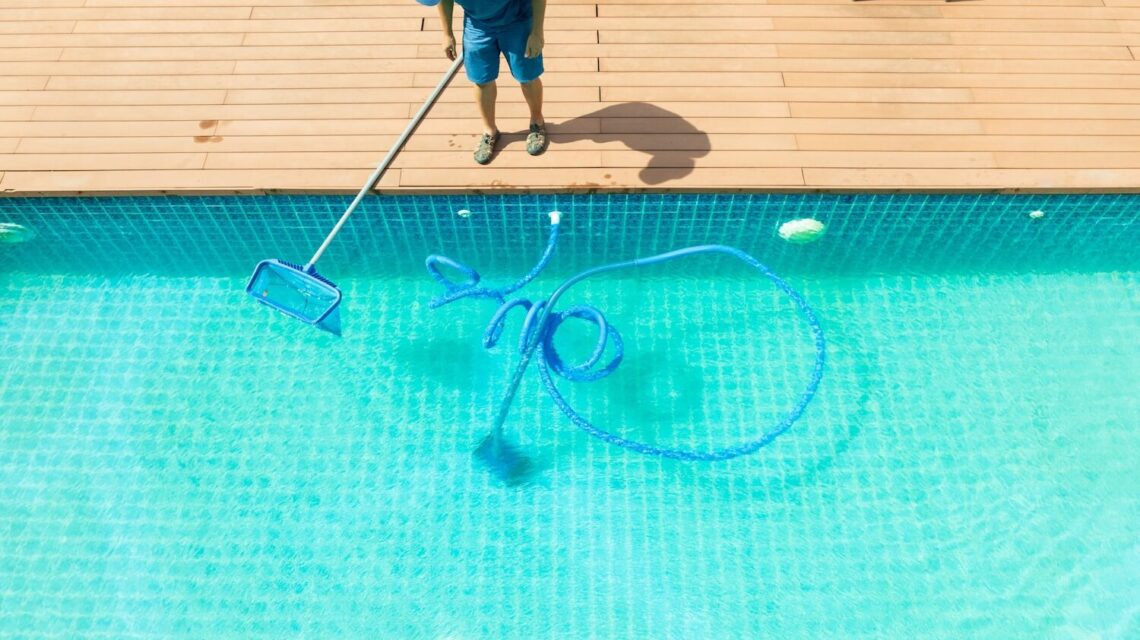Owning a pool can be one of the most enjoyable aspects of homeownership, providing a perfect spot for relaxation, exercise, and entertainment. However, maintaining your pool is essential to ensure it remains safe, clean, and functional. Neglecting regular professional pool maintenance services can lead to costly repairs, system breakdowns, and potentially unsafe swimming conditions.
The good news is that many pool problems are entirely preventable with proactive care. By following a detailed maintenance checklist, you can keep your pool in excellent shape, avoid unexpected repair bills, and ensure you get the most out of your investment. This article provides a comprehensive guide to essential pool maintenance tasks, designed to help you avoid repairs and preserve the quality of your pool for years to come.
Check Pool Water Quality Regularly
Water quality is the foundation of pool maintenance. Clean, clear water not only ensures safe swimming conditions but also prevents damage to your pool equipment and surfaces. Regular testing and adjustment of water chemistry are key to preventing issues like cloudy water, algae growth, and scale buildup.
Proper pH Balance
The pH level of your pool water plays a significant role in the effectiveness of chlorine and other chemicals. If the pH is too high or too low, it can result in poor water quality and damage to pool equipment and surfaces.
- Ideal pH range: 7.4-7.6
- If the pH is too low (acidic), the water can cause corrosion on metal components like ladders, pumps, and heaters, leading to premature wear and tear.
- If the pH is too high (alkaline), this can result in calcium buildup on pool surfaces and equipment, causing scaling and cloudy water.
To maintain the right pH balance, use a pool testing kit or test strips weekly. If adjustments are necessary, add a pH increaser (soda ash) or a pH decreaser (muriatic acid) according to the manufacturer’s instructions.
Chlorine Levels
Chlorine is the most common sanitizer used in pools, and it plays a critical role in disinfecting the water and keeping harmful bacteria and algae at bay. Without the proper chlorine levels, your pool could become a breeding ground for bacteria, causing health concerns and potential damage to the pool surfaces.
- Ideal chlorine levels: 1.0-3.0 ppm (parts per million)
Over-chlorination can cause skin and eye irritation, while too little chlorine can lead to algae growth and bacterial contamination. Test the chlorine levels at least once a week and adjust by adding chlorine tablets, liquid chlorine, or chlorine shock as needed.
Alkalinity and Calcium Hardness
Maintaining balanced alkalinity and calcium hardness is essential for protecting both the water and the pool’s structure.
- Alkalinity: Acts as a buffer to stabilize the pH level. Aim for 80-120 ppm.
- Calcium hardness: Prevents the pool water from becoming too soft, which could damage pool surfaces and equipment. Ideal calcium hardness is between 200 and 400 ppm.
To maintain proper levels, regularly test alkalinity and calcium hardness using a test kit, and adjust with an alkalinity increaser or a calcium hardness increaser when needed. Imbalanced levels can lead to stains, scaling, or etching of pool surfaces.
Inspect and Clean Pool Equipment
Your pool equipment works tirelessly to maintain clean water and proper circulation. Without proper care, however, pool equipment can become inefficient or even break down. Regular inspection and cleaning are key to ensuring that everything runs smoothly.
Pump and Filter System
The pool pump circulates water through the filter to remove debris and contaminants, making it one of the most important components in the pool system. Regular maintenance can prevent the pump from breaking down unexpectedly.
- Check for leaks: Inspect the pump for any signs of leaking water, which can indicate a problem with the pump seals or gaskets.
- Clean or replace filters: Clean or replace the filter cartridge every few months. Over time, filters become clogged with debris, reducing their ability to filter water effectively. If your filter is outdated, consider replacing it to ensure optimal performance.
- Backwash the filter: If you have a sand or DE (diatomaceous earth) filter, perform a backwash once a month to clear out debris and improve filtration efficiency.
Signs that your pump or filter may need repair include weak water flow, strange noises, or water that appears cloudy despite regular chemical treatments. If you notice these symptoms, it’s time to call a professional.
Heater Maintenance
If you have a pool heater, it’s essential to inspect and maintain it regularly to avoid malfunction. Pool heaters help extend your swimming season by maintaining a comfortable water temperature, and without proper maintenance, they can develop costly issues.
- Check for blockages: Leaves and debris can accumulate in the heater’s intake, affecting its performance. Ensure the intake and exhaust vents are clear.
- Clean the heater: Dirt and mineral buildup can affect the efficiency of your heater. Clean it regularly to avoid overheating.
- Inspect the thermostat: Ensure that the thermostat is working correctly so that the heater doesn’t run excessively or not enough.
Common heater problems include inconsistent heating, odd noises, or a failure to turn on. If you notice these symptoms, it’s a good idea to have a professional service technician inspect the system.
Skimmer and Pump Baskets
Skimmer baskets and pump baskets trap debris before it can reach the pump, preventing clogging and ensuring proper water flow. Clean these baskets at least once a week to avoid pump strain and keep the water circulating efficiently.
Neglecting to clean the baskets regularly can lead to debris buildup in the pump, which can cause it to overheat and fail. This can result in expensive repairs that could have been avoided with simple upkeep.
Check and Maintain Pool Surfaces
Keeping the surfaces of your pool clean and well-maintained not only improves the aesthetics of your pool but also protects it from long-term damage.
Tile and Grout Cleaning
The tile and grout around your pool’s waterline are particularly prone to calcium buildup and grime. Regular cleaning will prevent discoloration and maintain the aesthetic appeal of your pool.
- Calcium deposits: Calcium can accumulate on tiles and grout, leaving unsightly white streaks. Use a tile cleaner specifically designed for pool surfaces, or try a vinegar-water solution to dissolve the buildup.
- Grout damage: If the grout is damaged or worn down, it can allow water to seep into the pool walls, leading to long-term damage. Regrouting should be done as soon as you notice any cracks or missing grout.
Maintaining the grout and tiles not only keeps your pool looking good but also helps prevent water from leaking into the walls and causing structural damage.
Pool Surface Scrubbing
Brushing your pool’s walls and floors regularly is one of the best ways to prevent algae buildup. Algae thrive in warm, stagnant water, so regular scrubbing ensures that your pool stays clean and safe for swimmers.
- Brush weekly: Use a pool brush that is appropriate for your pool surface (stainless steel for concrete, nylon for vinyl). Scrub the walls and floors to remove dirt and algae before it has a chance to build up.
- Vacuum the pool: Use an automatic or manual pool vacuum to remove debris from the bottom of the pool. Vacuuming regularly helps to prevent dirt from settling and affecting the water quality.
Vinyl Liner Inspection
If your pool has a vinyl liner, inspecting it for wear and tear is essential to prevent leaks and costly repairs.
- Check for punctures or tears: Vinyl liners are susceptible to damage from sharp objects, pool toys, or even pets. Minor tears can be patched with a vinyl liner repair kit, but large tears may require a complete liner replacement.
- Fading: Over time, the color of your vinyl liner can fade due to exposure to chemicals and UV rays. While fading doesn’t necessarily affect the pool’s functionality, it can detract from the aesthetic appeal.
Maintaining Pool Deck and Surrounding Pool Areas
Your pool deck and surrounding landscaping are just as important as the pool itself. Regular maintenance of these areas can help prevent water damage and ensure a safe, clean environment.
Cleaning Deck Surfaces
The pool deck often gets overlooked during maintenance, but it’s an essential area to clean regularly. Pool deck surfaces can accumulate dirt, debris, and algae, especially if you live in a humid or rainy area.
- Sweep regularly: Sweep the deck to remove dirt and leaves. This helps prevent dirt from being carried into the pool, where it can clog filters and affect water quality.
- Pressure wash: Use a pressure washer to clean the deck every few months. This removes stubborn dirt, mold, and mildew that can build up on surfaces, especially around the pool’s edge.
Drainage Systems
Proper drainage is essential to maintaining a pool’s surrounding areas. Poor drainage can lead to water pooling around the pool deck, causing erosion, mold, and damage to your landscaping.
- Check for pooling water: Inspect the area around your pool for signs of standing water. If water isn’t draining properly, it can lead to foundation issues and create a breeding ground for mosquitoes.
- Maintain gutters and downspouts: Ensure that gutters and downspouts are free of debris and functioning properly to direct rainwater away from the pool area.
Hire a Pool Professional for Pool Maintenance Service
While DIY maintenance can help keep your pool in good shape, hiring a professional pool maintenance service ensures that your pool gets the comprehensive care it needs to stay in peak condition.
When to Hire a Professional
While regular checks and maintenance can be done yourself, certain tasks require the expertise of a professional. If you notice any of the following issues, it’s time to call a pool technician:
- Water chemistry problems that won’t resolve: If your pool water remains cloudy despite using chemicals, a professional can identify underlying issues.
- Pump or heater malfunctions: These components require specialized knowledge to repair safely.
- Major pool surface damage: Cracks in the pool structure, extensive liner damage, or broken equipment should be handled by experts.
Benefits of Hiring a Pool Maintenance Service
Professional pool maintenance services have the tools and expertise to catch minor issues before they become major problems. Regular professional inspections can ensure that your pool is operating efficiently and help extend the life of your equipment and pool structure.
Pool Maintenance Checklist Conclusion
Your pool is more than just a backyard feature – it’s an investment in your lifestyle, offering endless enjoyment, relaxation, and memories. Prevention is always more affordable than fixing problems after they’ve escalated, and by being proactive, you’ll extend the life of your pool, enhance its efficiency, and ensure your family and friends can enjoy it for years to come.
Remember, pool maintenance doesn’t have to be a daunting task. It’s about establishing a routine, being vigilant, and addressing small issues before they become big ones. If you ever feel uncertain or overwhelmed, don’t hesitate to call in a professional to handle the more complex tasks. A little help from the experts can save you time, effort, and money in the long run.
So dive in, keep your pool sparkling clean, and enjoy the peace of mind that comes with knowing your pool is ready for any occasion, all year long. After all, a well-maintained pool is not only a source of joy—it’s a reflection of your dedication to quality and care.




